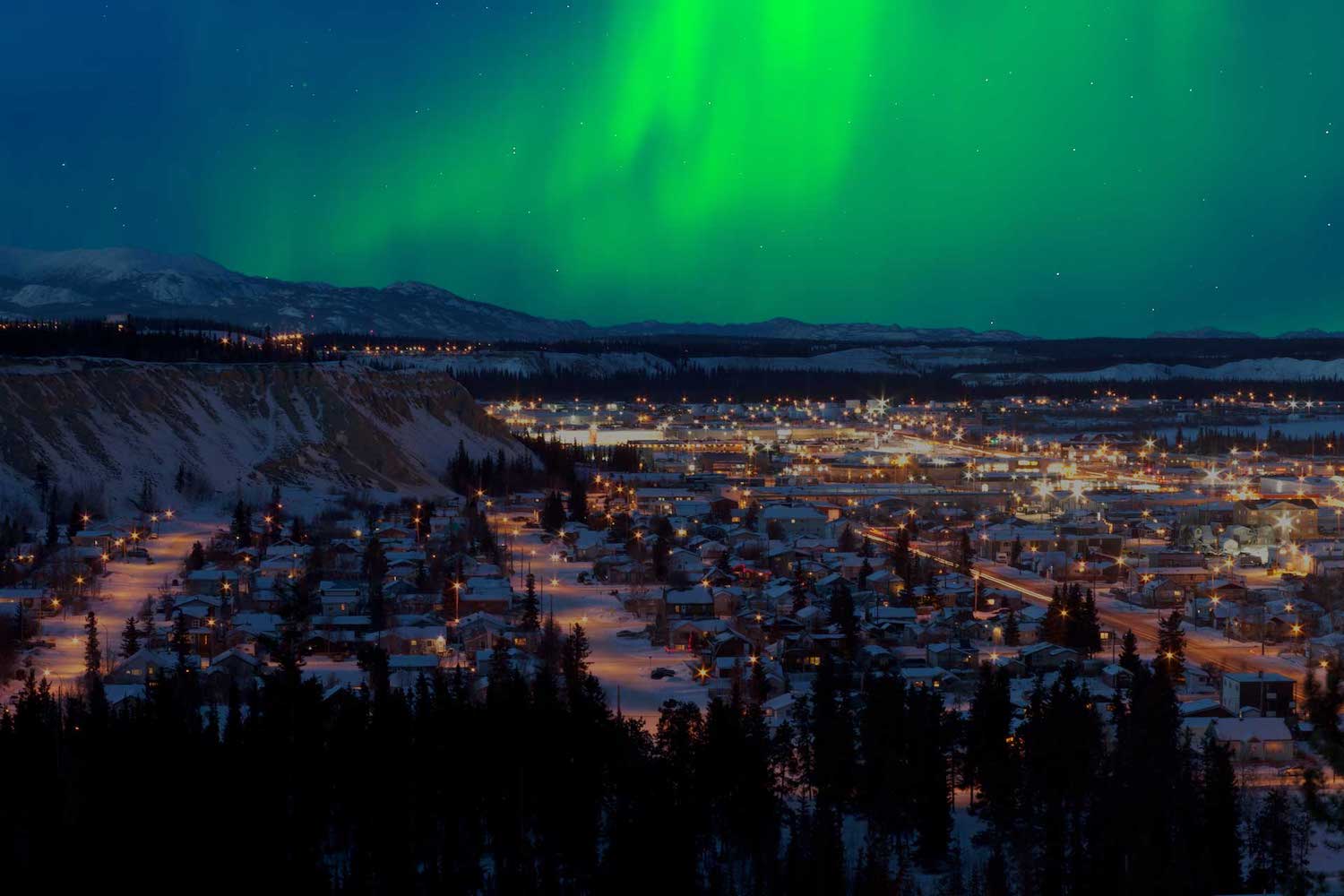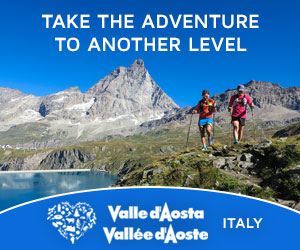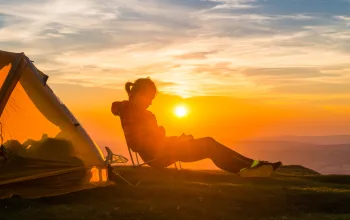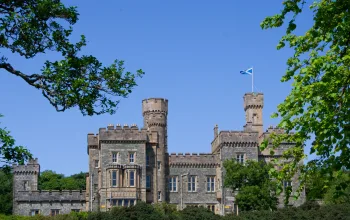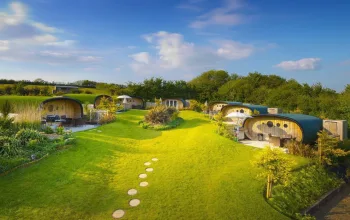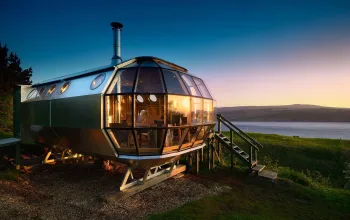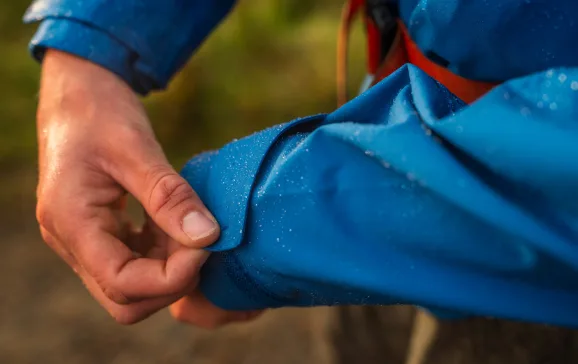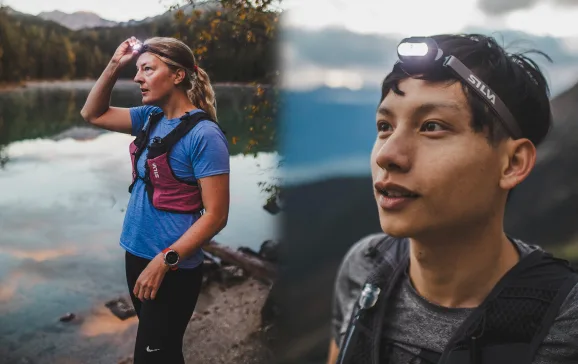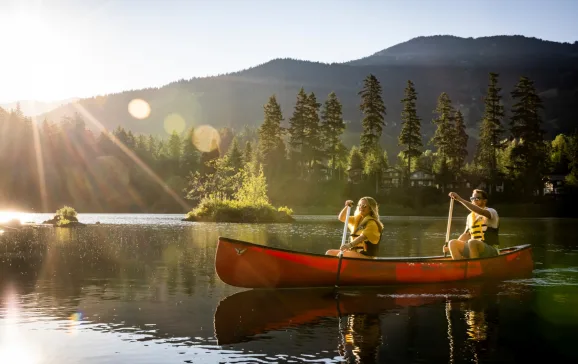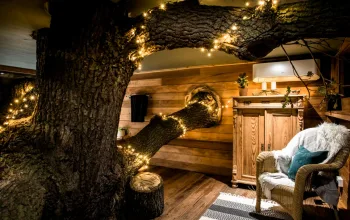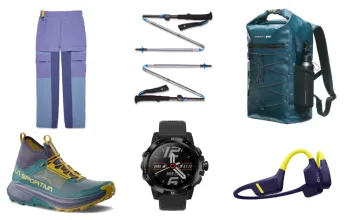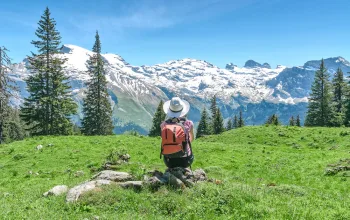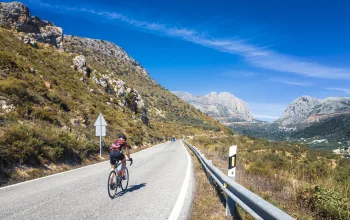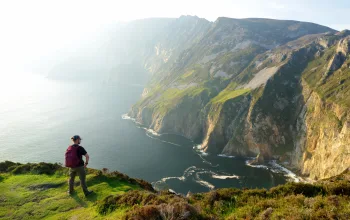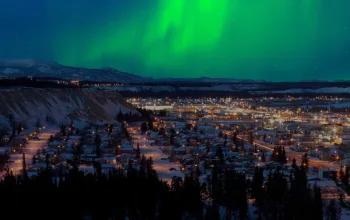Seeing the northern lights is, for many people, an ultimate bucket list goal. Sure, the rise of social media means that some of the mystery surrounding the northern lights (aka the aurora borealis) has waned slightly but, as anyone who’s seen the phenomenon in real-life will tell you, there’s still not many experiences on earth that match witnessing this famous cosmic light show firsthand.
And according to the aurora experts, the best time to see the northern lights is yet to come!
Northern lights are occurring more often because we are approaching solar maximum - aka the highest rate of solar activity in the sun's 11 year solar cycle. This is predicted to peak in the winter of 2024-2025 but Icelandic celebrity astronomer Sævar Helgi Bragason says the increased frequency of Northern Lights might last until 2029. Moreover, the biggest gain, he said, is predicted to occur after the solar maximum has occurred so we can look forward to regular, vibrant auroras in the next few years!
To help you plan the trip of a lifetime, we’ve compiled this guide to some of the best places to see the northern lights. What, after all, could be better than an adventure that features the consequences of charged particles from the sun colliding with atoms in Earth’s atmosphere?
Before highlighting some of the very best destinations for seeing the northern lights in person, it’s well worth pointing out at this stage that you can see the northern lights anytime between late August and mid-April. Dark skies are what you’ll need so don’t count on seeing them from mid-April onwards until mid-August. The long days of summer at this time of year, especially up around the Arctic Circle, means your chances of seeing the northern lights during this particular window are almost zero.
Interested in seeing the aurora borealis? Consider getting yourself to one of the destinations below.
Iceland
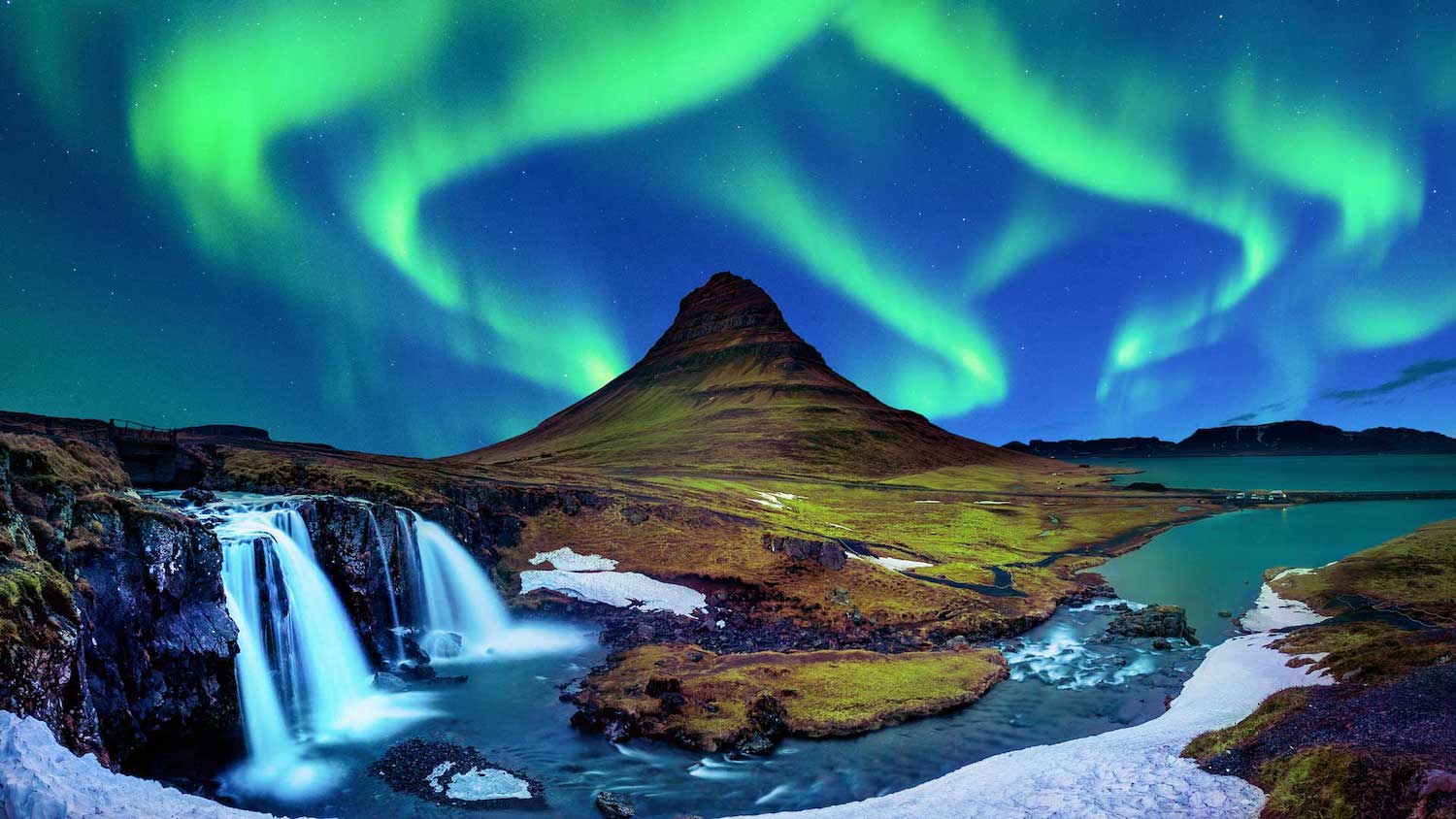
Think of Iceland and, chances are, your mind might just wander unobstructed to thoughts of the northern lights. Yes, the country of Iceland is home to some incredible waterfalls, and the kind of otherworldly terrain that makes filmmakers everywhere swoon (check out Vestrahorn Mountain - aka Batman Mountain - on the Stokksnes peninsula in Southeast Iceland, as a case in point), but the reality is that a big percentage of the country’s visitors make the journey to this volcanic island in the hope of capturing a glimpse of the north’s most famous light show (hard luck Blackpool, better luck next time).
Owing to the fact it’s a naturally occurring phenomenon, predicting the northern lights in advance – even somewhere as northerly as Iceland – is a challenge. That being said, Iceland has a whole lot of interconnected factors in its favour when it comes to considering your northern lights adventure destination. The auroras, northern and southern, only appear near the world’s magnetic poles. In the north, they’re usually only visible above a latitude of 60 degrees (below 60 degrees in the south). The good news for seekers of the northern lights is that Iceland sits at a latitude of roughly 64 degrees north, meaning it’s pretty much perfectly positioned in a geographic sense.
Like all the best places to see the northern lights, the northerly position of Iceland means it gets long hours of darkness during the wintry half of the year. This might sound obvious but this will help you because, ultimately, you’ll have more hours at night to seek out something that naturally cannot be witnessed during daylight. Throw in the fact that Iceland, as a country, is sparsely populated, with not too many built up areas, and it means you’re unlikely to have to contend with light pollution that could potentially derail your magic moment with the aurora borealis.
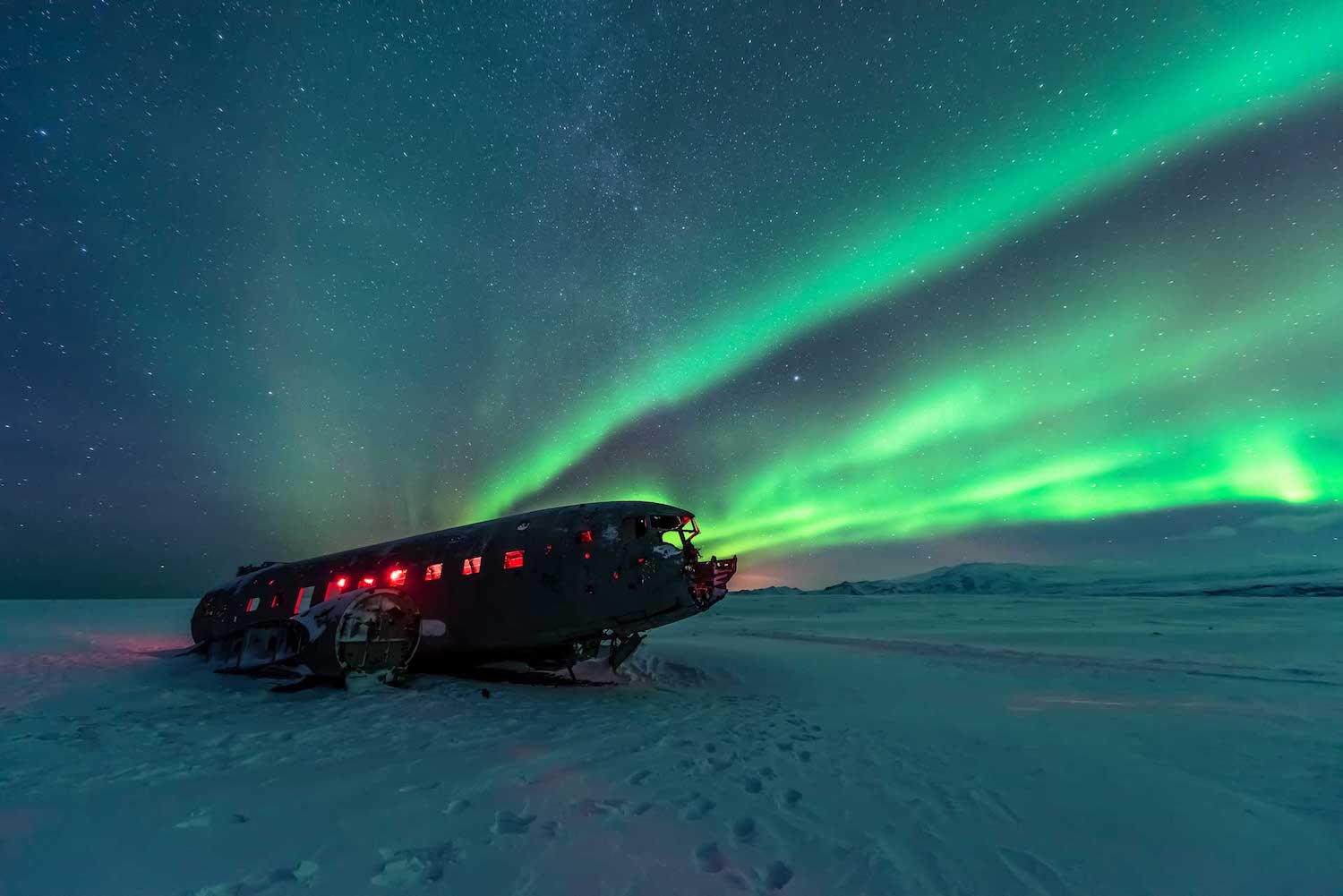
Another thing worth considering when trying to establish where you’re heading off to in order to see the northern lights is the ‘what if, due to the various factors beyond your control, the northern lights refuse to play ball and do not show up’ scenario. With the northern lights, you can plan, and plan, and plan some more but they are, in reality, notoriously hard to predict. Witnessing them for yourself, even if you go to the right places at the right time of year, requires a little bit of good fortune.
This is as true of Iceland, as it any other destination on our list. The good thing about Iceland, however, is just how much other stuff there is to see and do. How does, for starters, mind-blowing glaciers, otherworldly waterfalls, black sand beaches, stunning rock formations, exploding geysers and hot lava-spewing volcanoes sound? Sounds pretty epic, doesn’t it? Yes, even if the northern lights don’t show during your time in the country, the pure outdoorsy goodness of Iceland should more than make up for it. Plus the established tourism infrastructure with ample transport, food, drink and accommodation options means organising a trip here is super straightforward!
If you’re looking to go on a paid-for northern lights tour in Iceland, you’ll be glad to know the island is absolutely chockablock with options on that front. Arctic Adventures, Reykjavik Excursions and Gray Line all run northern lights tours, at various different price points, and are worth worth checking out.
Norway
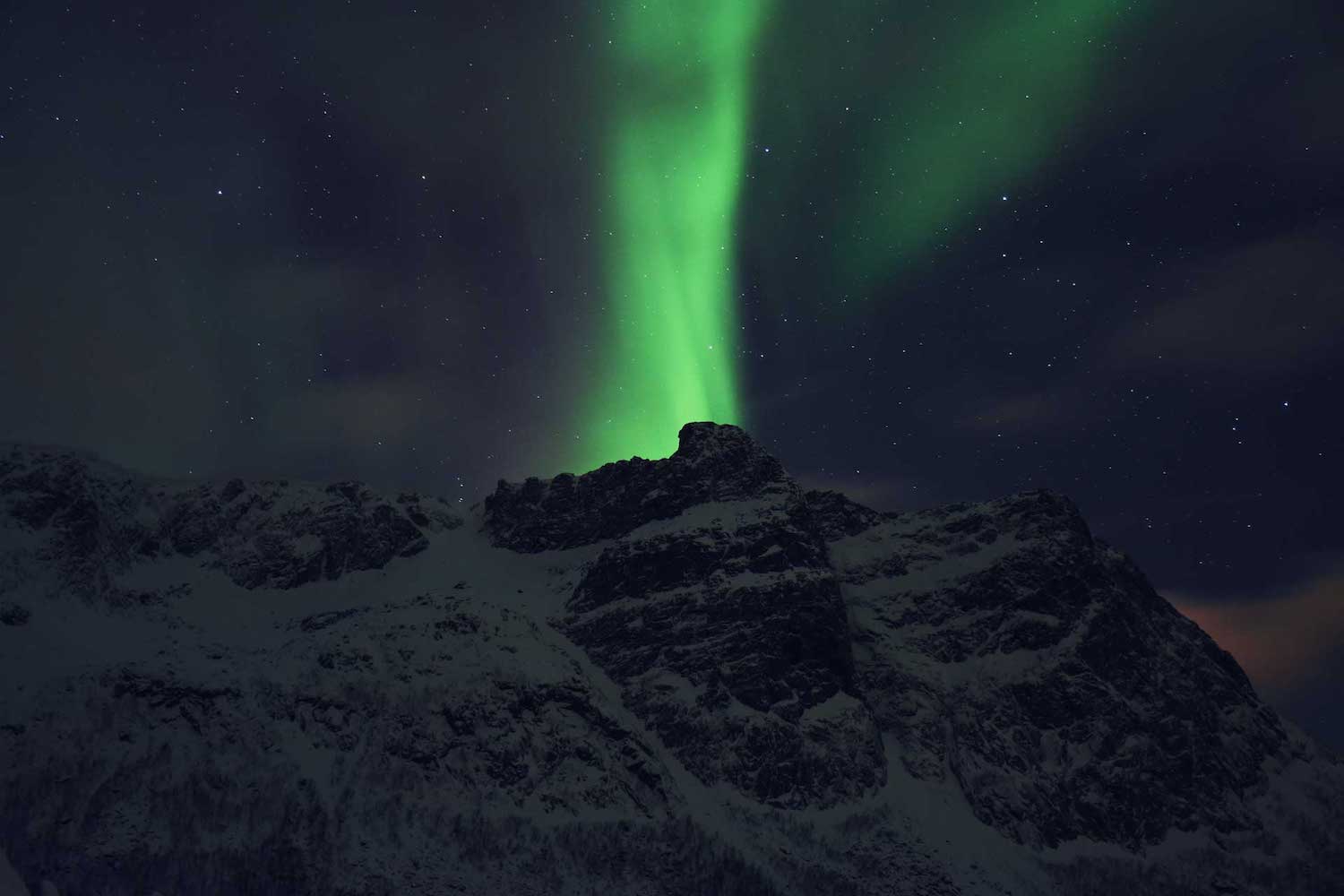
If you know anything about the northern lights, you’ll already be well aware that those Scandinavian countries up at the top of the map are particularly well positioned for adventurous people wishing to witness a cosmic phenomenon. Norway, as one of these Scandinavian countries, is no exception on that front. With a considerable chunk of the nation’s landmass situated within the ‘Northern Lights Belt’, an area that stretches from a latitude of 65 degrees north to 72 degrees north, Norway has loads of top northern lights destinations contained within its borders. The Arctic Circle, by the way, begins above 66 degrees north; a state of affairs that should emphasise the extent to which this is a great country to get properly intrepid in.
Norway is home to spectacular fjords, spectacular mountains, and spectacular terrain. On top of its spectacular nature, Norway is also a country in which wild camping is allowed almost everywhere you go. Now, it’s worth saying at this point that if you are suddenly taken by the idea of wild camping on a northern lights excursion in Norway, you should consider getting yourself an expedition quality sleeping bag as the overnight winter temperatures here can drop well into the minus numbers.
Most of the lists that focus on the very best places to see the northern lights in Norway will draw your attention to Tromsø, Kirkenes, the Lofoten Islands, the North Cape in Norway’s Nordkapp Municipality and Svalbard. And, quite frankly, that’s a collection of destinations that’s difficult to disagree with. We’ll give you a brief overview of them all now.
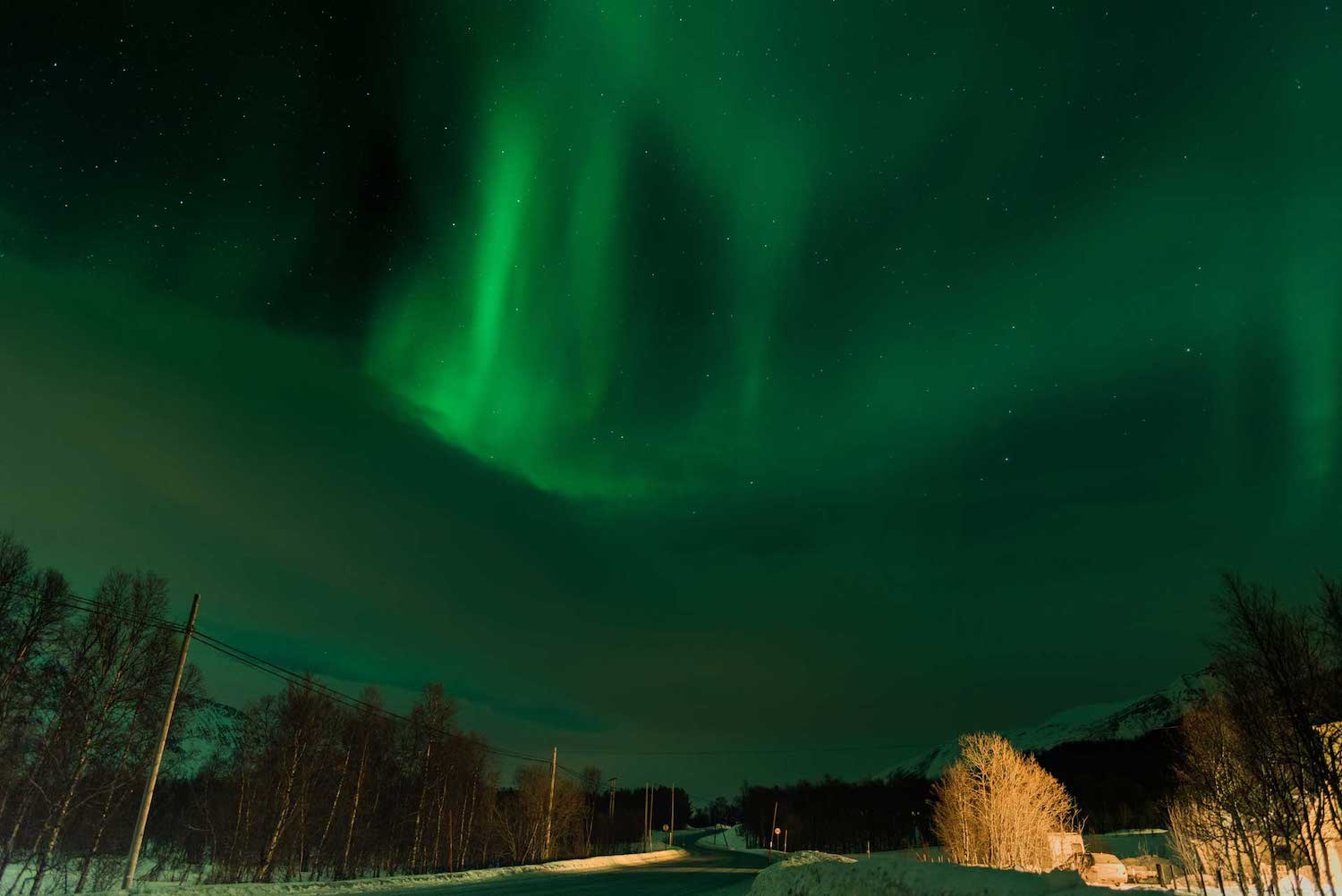
As of 2023, the city of Tromsø itself has a population of 41,915, making it the largest city in Northern Norway. Because of its size, tangible sense of history, and multiculturalism, Tromsø is affectionately known as ‘the capital of the Arctic’. It’s a brilliant place to base yourself if you want to explore epic Norwegian terrain and, of course, get a glimpse of the northern lights. Such is Tromsø’s charming nature during the day, in fact, you might even end up forgetting the primary purpose of your visit! Those of you who do remember the whole ‘seeing the aurora borealis’ part of your trip should consider booking a ‘northern lights safari’. A good operator will take you to the best spots, well away from any light pollution in the area. Like the idea of combining northern lights spotting with reindeer sledding? Tromsø Lapland are the organisation for you.
Quick heads up, it’s almost a 24 hour drive from Oslo to Tromsø. With that in mind, if you are in a rush and / or don’t fancy spending an entire day behind the wheel of a car, you might want to fly. It’s slightly less than two hours on the plane, if your connecting flight takes off in Oslo.
Perched right near the border with Russia, and in prime territory for witnessing the northern lights, Kirkenes is probably most famous for being the site of the Snowhotel Kirkenes. Made entirely from snow and ice, its northern lights accommodation at its most special.
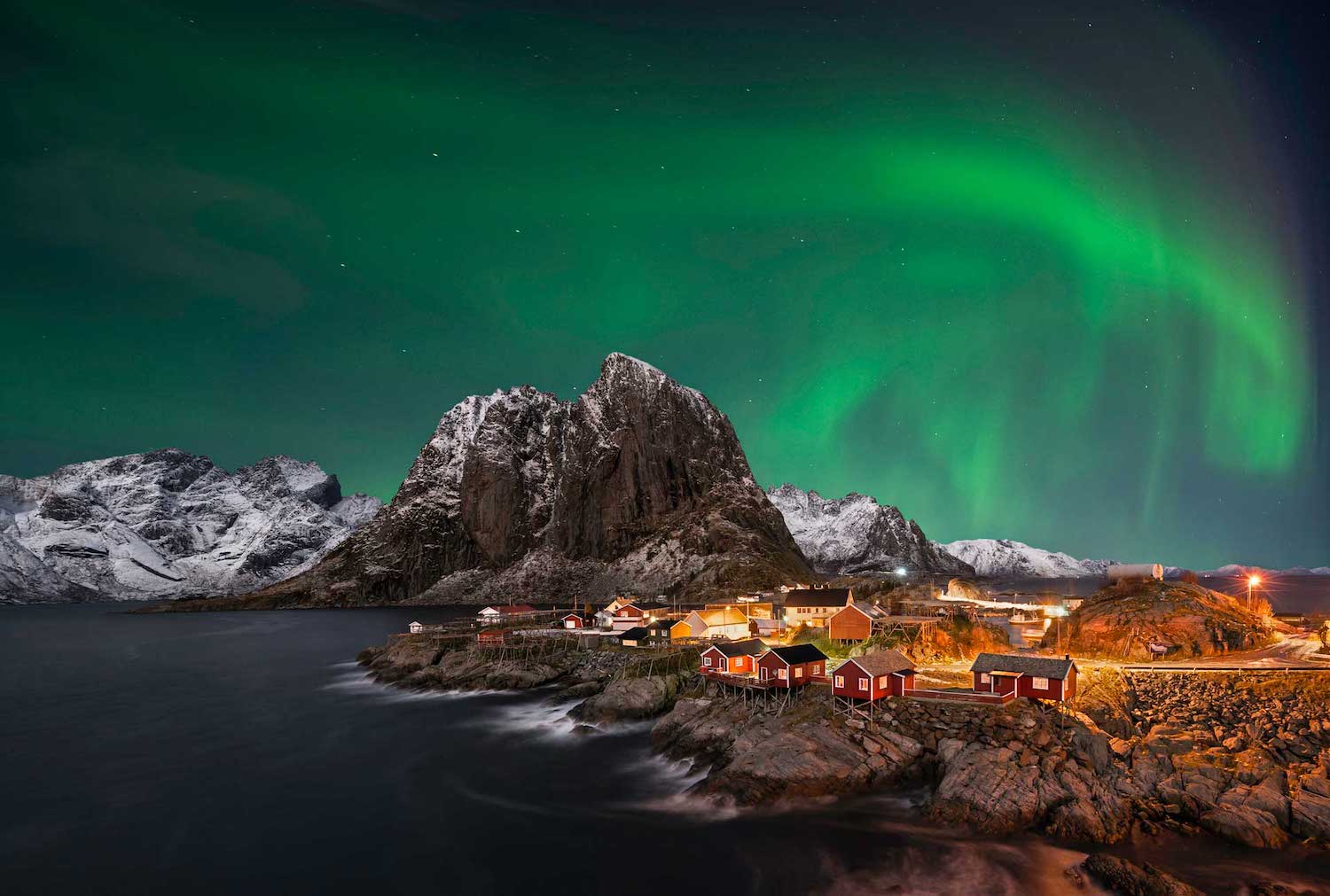
The Lofoten Islands are one of the best places in Norway to get to if you’re keen on seeing the northern lights. This peaceful and dramatic archipelago is famous for its mountains, that rise up out of the sea like ancient rock monsters, and idyllic fishing villages. It’s also a popular port of call for cruises. Lofoten Lights run some good northern lights tours in the area.
You’ll find Norway’s North Cape (Nordkapp in Norwegian) on the northern coast of Magerøya, an island in northern Norway. It’s as far north as you can get on mainland Norway, and is a place that can also lay claim to being Europe’s northernmost point. Despite being so far north, the North Cape can actually be reached via road. Needless to say, the E69 highway route to here can be something of a long car journey depending on your starting point. That being said, it’s also ludicrously scenic with endless park-up-and-take-some-photos opportunities along the way so it’s arguably well worth the effort. Maybe time for the ultimate road trip? Be sure to proactively research winter driving to the North Cape, if you do want to pursue such an extreme on-the-road adventure. There are, unsurprisingly, some rules and safety issues to factor into your journey.
You’ll find Norway’s North Cape (Nordkapp in Norwegian) on the northern coast of Magerøya, an island in northern Norway. It’s as far north as you can get on mainland Norway, and is a place that can also lay claim to being Europe’s northernmost point. Despite being so far north, the North Cape can actually be reached via road. Needless to say, the E69 highway route to here can be something of a long car journey depending on your starting point. That being said, it’s also ludicrously scenic with endless park-up-and-take-some-photos opportunities along the way so it’s arguably well worth the effort. Maybe time for the ultimate road trip? Be sure to proactively research winter driving to the North Cape, if you do want to pursue such an extreme on-the-road adventure. There are, unsurprisingly, some rules and safety issues to factor into your journey.
The North Cape itself includes a 307-metre-high cliff with a plateau on top of it where visitors, if the weather’s behaving, can either watch the midnight sun or the aurora borealis. Stand here and look out upon the water, contemplating while you do so that there’s nothing between you and the Arctic except Svalbard. Wildlife doing its thing, breathtaking Nordic landscapes, and a front row ticket to the end of the world; destinations do not, it’s fair to say, get much more epic than this.
Finally, on the subject of northern lights in Norway, there’s Svalbard. This land of the polar bears is a remote archipelago sandwiched halfway between the Norwegian mainland and the North Pole. The ski touring on Svalbard, if that’s your kind of thing, is something truly special. As a destination, it’s undoubtedly one of the greatest places on earth to witness the northern lights. The team at Much Better Adventures organise highly-rated six-night adventures in Svalbard that consist of wild camping, hiking, snowmobiling and, of course, northern lights chasing.
Greenland
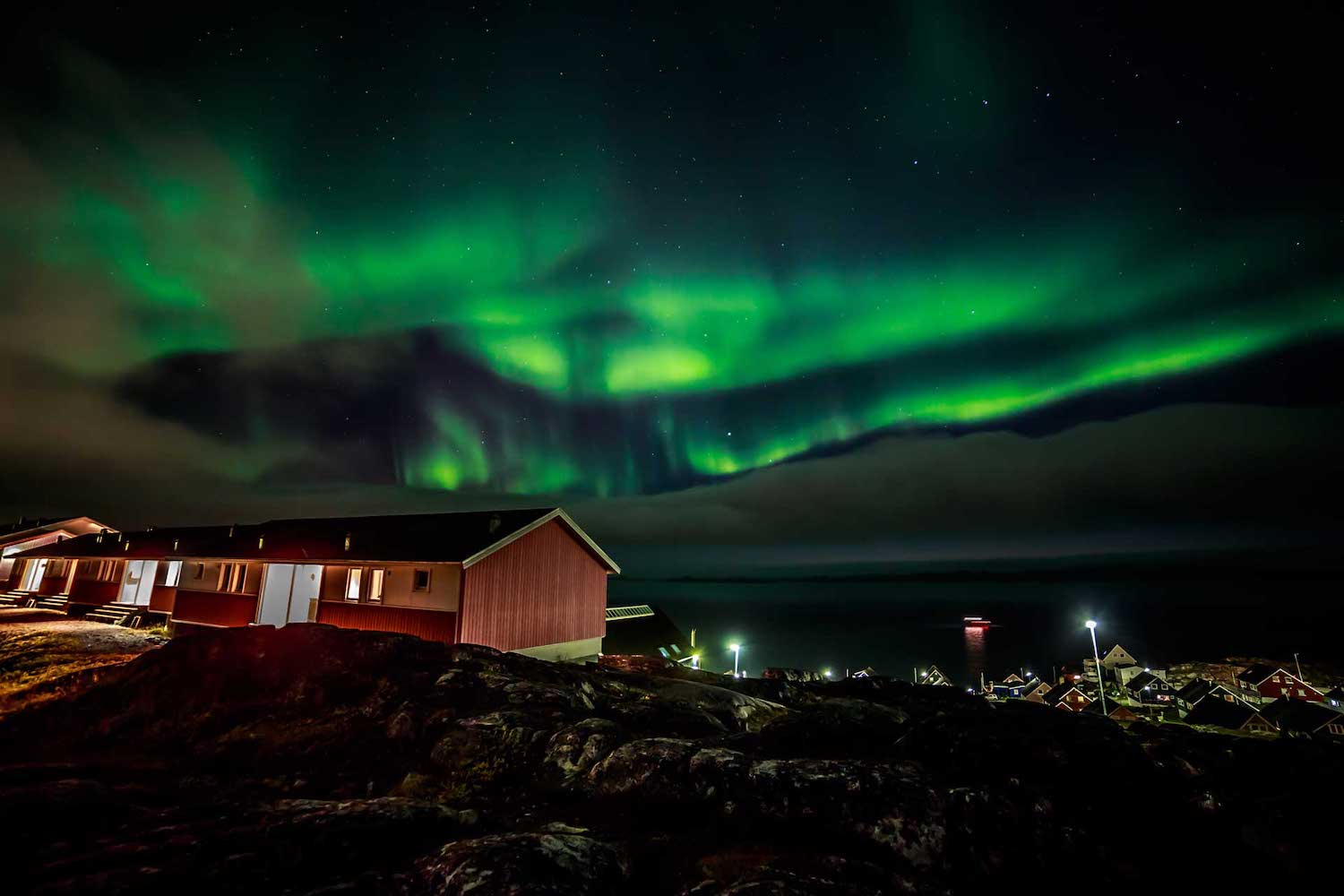
One of the finest aurora borealis destinations on the planet, you can witness the northern lights in Greenland anytime between September and April.
It may be one of the more challenging destinations on this list to visit, but the opening of a new international airport in the capital city, Nuuk, in late 2024 has made this wild corner of the Earth a little more accessible.
Situated just below the Arctic Circle, Nuuk is a small city on Greenland's southwest coast (approx population: 19,000). Known for its large fjord system, its waterfalls, whales and icebergs; this built up area on Greenland sits in front of the spectacular Sermitsiaq mountain. The city is also home to the Greenland National Museum, with its historic Inuit collection, and the Nuuk Art Museum. The Katuaq Cultural Centre is also situated in Nuuk, and is used to host film nights, concerts, and exhibitions. Despite having a fair bit of light pollution, by Greenland’s light-pollution-free standards at least, Nuuk is still a superb place to base yourself if you want to see the northern lights.
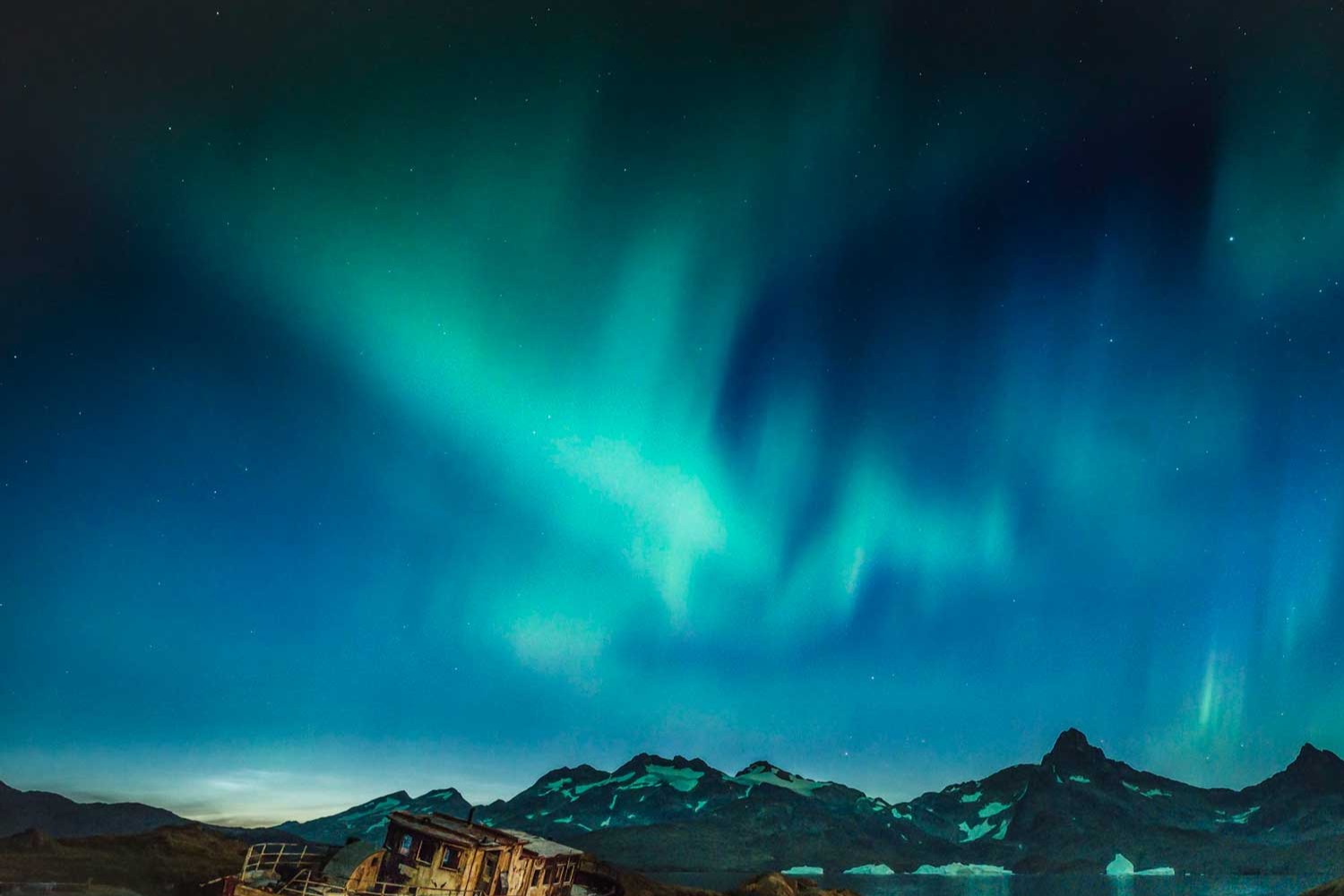
Ilulissat, in Greenland’s excellently-named Disko Bay, is another highly rated spot for witnessing the northern lights. The name Ilulissat means icebergs, and is fitting because the town itself is situated right by the Ilulissat Icefjord; a UNESCO World Heritage Site since 2004, not simply because of its beauty but because the Jakobshavn Glacier plays a significant role in scientists’understanding of climate change. Watching on as the northern lights dance their cosmic dance above the icebergs of Disko Bay, well… you’re not going to forget that memory in a hurry, are you? A lot of popular trips on Greenland, it’s worth saying, bring together Nuuk and Ilulissat in one neat little package.
Sisimiut is another cracking place to visit for northern lights excursions. Formerly known as Holsteinborg, Sisimiut is Greenland’s second-largest city (approx population: 5,500) and one of the territory's fastest-growing towns. Situated 40 km north of the Arctic Circle, and with it being the launchpad for a wide variety of outdoor activities in the backcountry, Sisimiut has garnered a reputation as being something of an adventure travel hub. Dog sledding, snowmobiling, cross-country skiing and more; it’s all happening here.
Want a northern lights adventure in Greenland, but want someone else to take care of the logistics? Greenland Tours, Quark Expeditions, and Greenland Travel all run some pretty special trips.
Finland
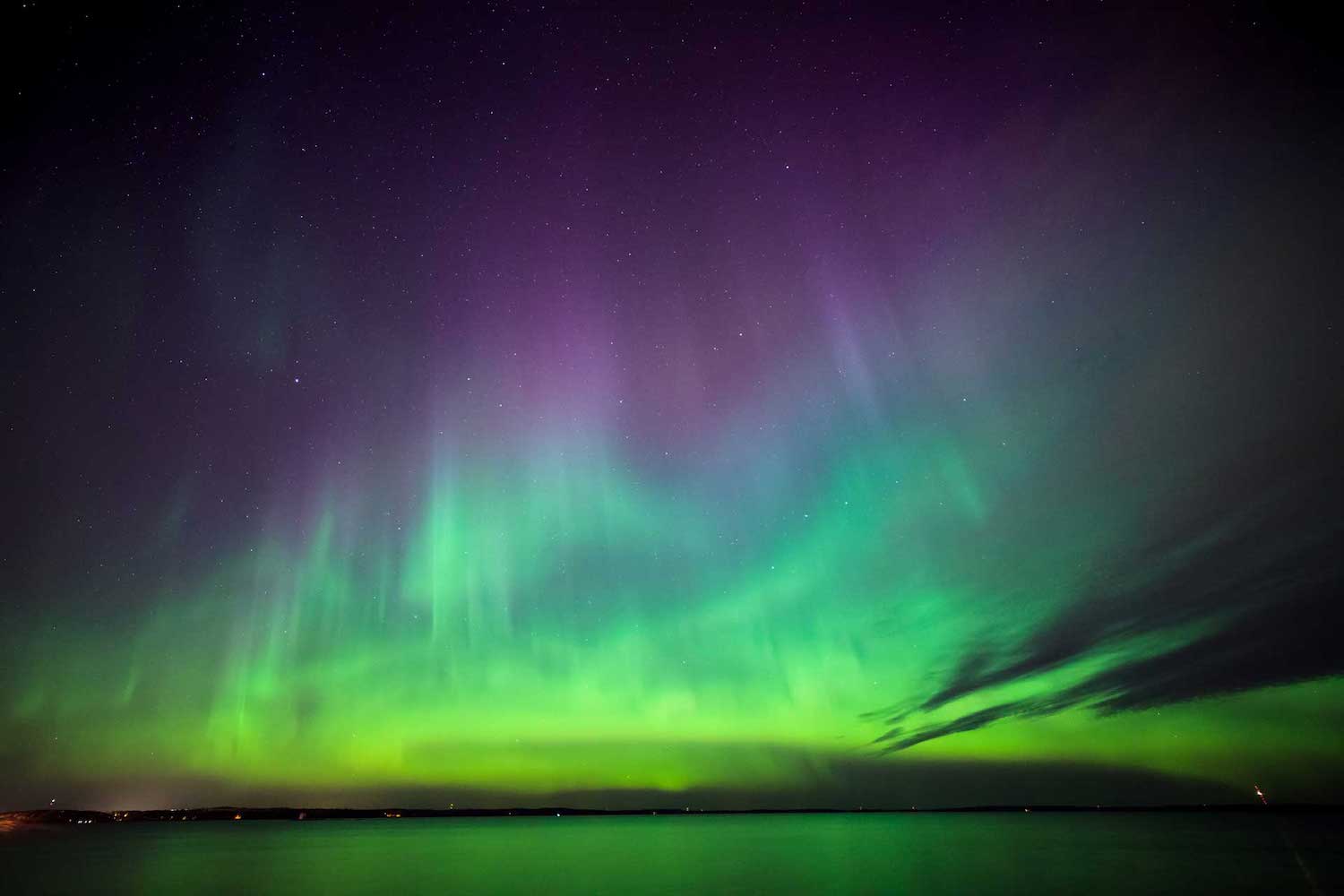
Find yourself in northern Lapland, Finland’s largest and northernmost region, and you’ll discover that the northern lights shine pretty much every other clear night between September and March. Down in southern Finland, meanwhile, they’re visible in the sky between 10 and 20 nights per year. Adventurers heading to Lapland then should be fully prepared to photograph the northern lights.
Because the northern lights can often appear and disappear at a moment’s notice between sunset and sunrise, and because Lapland can get extremely cold, many visitors to the most northerly areas of Finland choose to watch them from purpose-built accommodation. You will have, no doubt, already seen what we’re talking about here on Instagram. These cosy shelters, that usually have see-through roofs and / or wide panoramic windows, are often going viral on social media. Finland has got loads of this kind of accommodation, so even if you miss out on your top pick you should still be able to get in somewhere else good (so long as you book in advance).
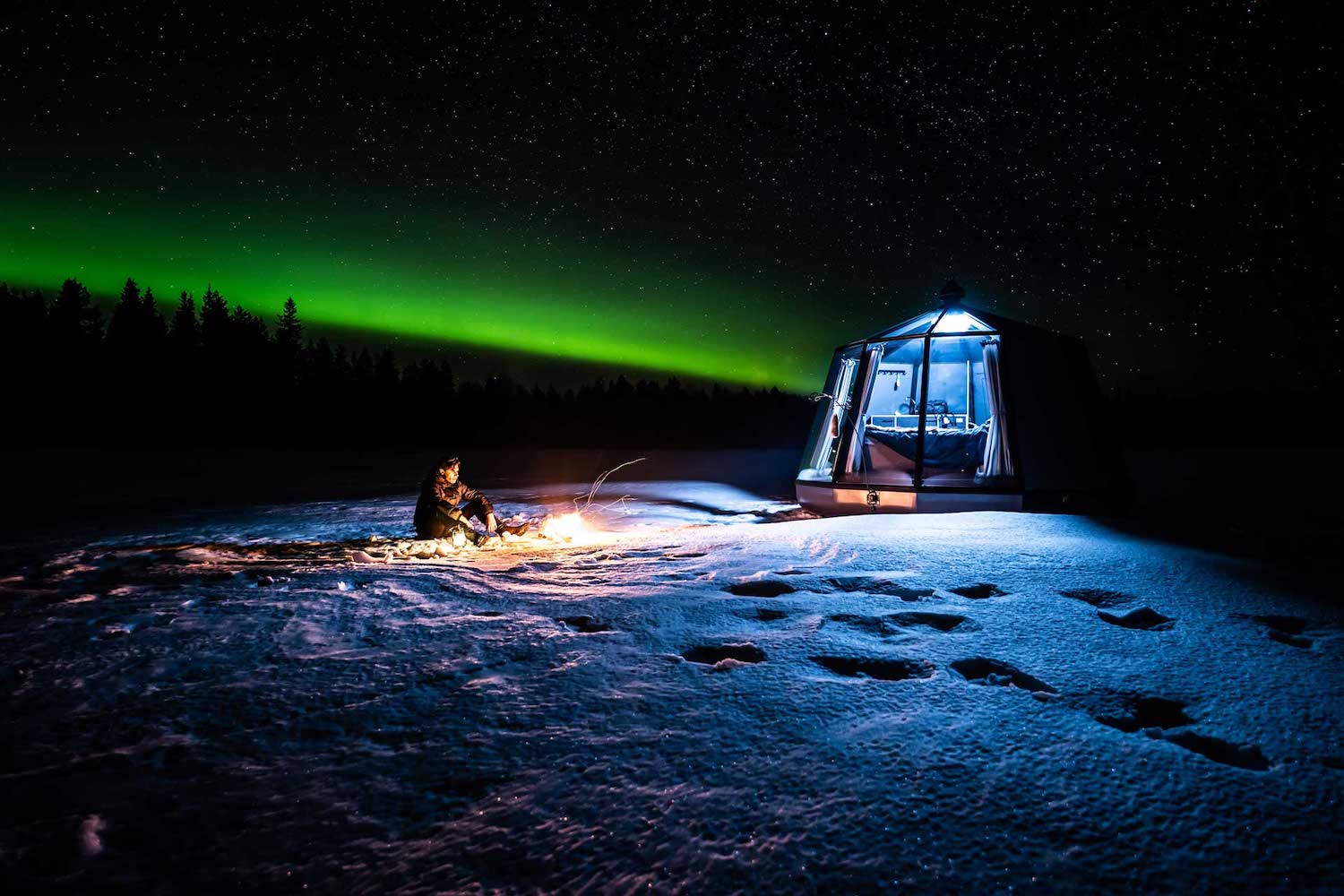
Visit Finland has an excellent rundown of ‘sleeping under the northern lights’ options. Our favourites include the Aurora Bubbles at the Wilderness Hotel Nellim and the Aurora Village in Ivalo. Like we said though, you’re spoilt for choice when it comes to this type of accommodation in northern Finland. The northern lights are a massive tourism pull in this part of the world, arguably the biggest pull in fact, and the sheer quantity of interesting places to stay certainly reflects this.
Sweden
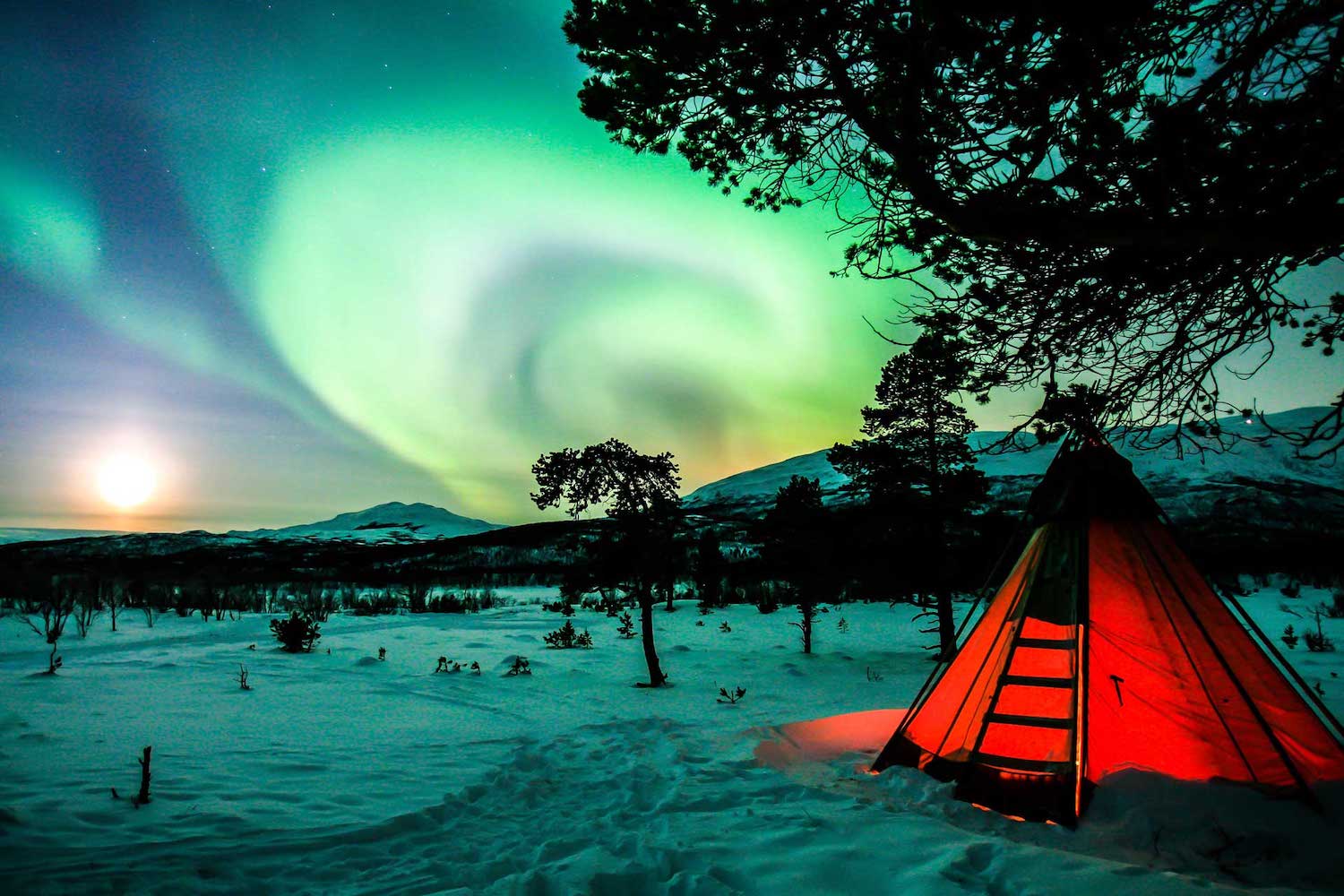
Up in around and Kiruna (the northernmost town in Sweden) the northern lights start showing up at the start of September. They’re normally on display until the end of March, sometimes going on to illuminate the skies in the early part of April as well. When winter’s well and truly in full swing, around January time, you’ll have a very good chance of seeing the lights right across Swedish Lapland. This massive expanse of land in Sweden’s northwest corner covers nearly a quarter of the country.
The Aurora Sky Station, Jukkasjärvi and Porjus are all worth a look when you’re planning your very own ‘seeing the northern lights in Sweden’ adventure. The Aurora Sky Station is situated in Abisko National Park, 100 kilometres west of Kiruna. When it comes to viewing the northern lights, there are no guarantees of course. However, Abisko is known for its clear skies and has become a popular spot with visitors looking to tick a big one off their bucket lists. There’s a chairlift that goes up to the Aurora Sky Station observation tower on Mount Nuolja, and also a Northern Lights Exhibition, café and gift shop up there as well. Needless to say, temperatures drop low here in winter so wrap up warm.
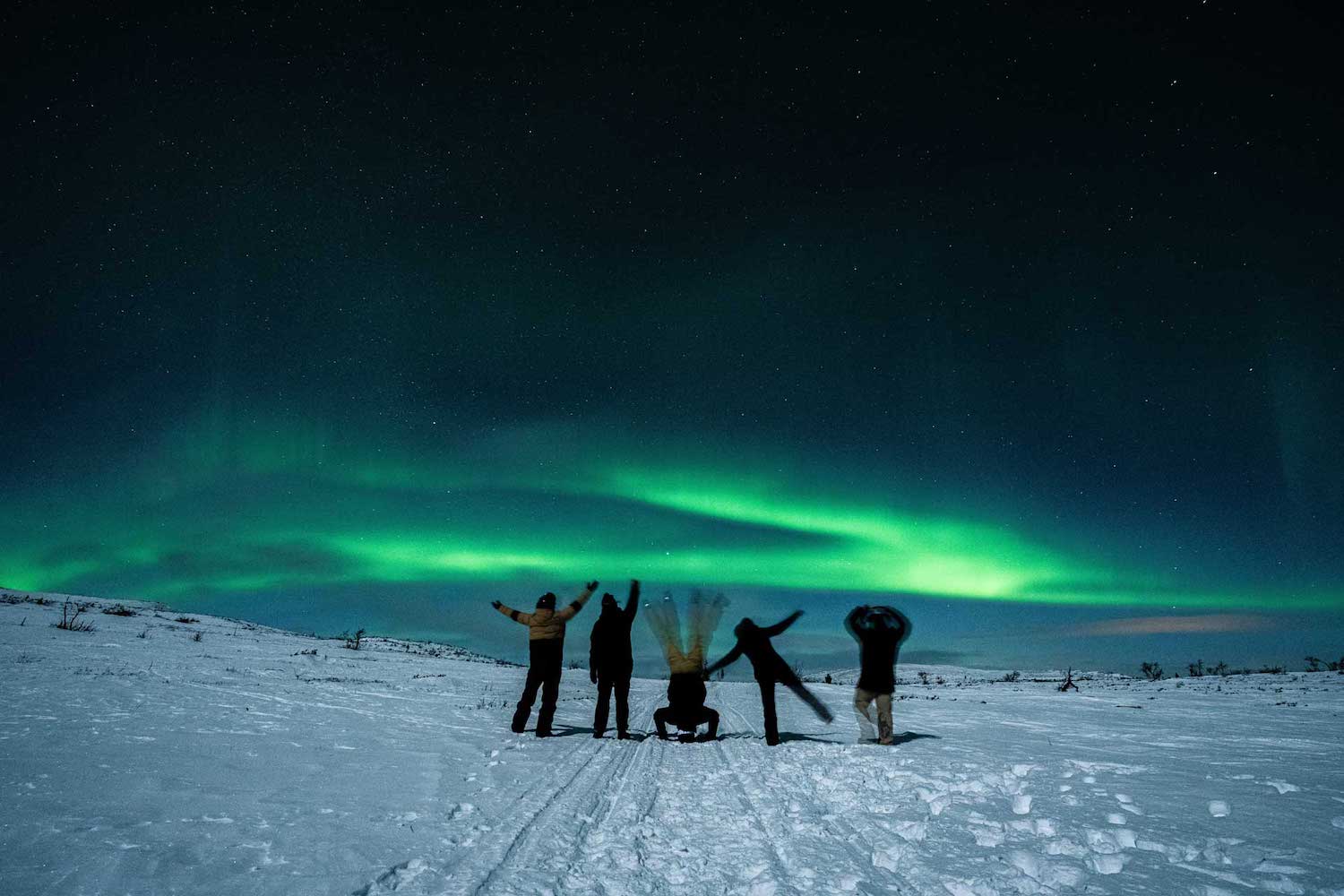
Looking to turn the Swedish dial on your Swedish adventure up to 11, get yourself to the idyllic village of Jukkasjärvi. It’s home to approximately 550 people, is only about 20 minutes drive from Kiruna, and is where you’ll find the world famous ICEHOTEL. A stay in this place, the first ice hotel in the world, is memorable enough on its own but combine with it a Northern Lights Safari and you’re left looking at the building blocks of an all-time great holiday. Snowmobile excursions, and photography packages that include expert advice as part of their offering; it sounds good, doesn’t it?
Porjus, with its 265 inhabitants, is another popular northern lights village in Sweden. It’s situated 60 kilometres north of the Arctic Circle, on the edge of a stunning Scandinavian lake, and within the UNESCO World Heritage Site of Laponia. Get away from the big cities, embrace the stillness of nature, rent a cabin and watch the greatest light show on earth with a warm glass of glögg (mulled wine). You can get to Porjus via buses and trains from more built-up areas like Kiruna, Luleå and Gällivare.
United Kingdom
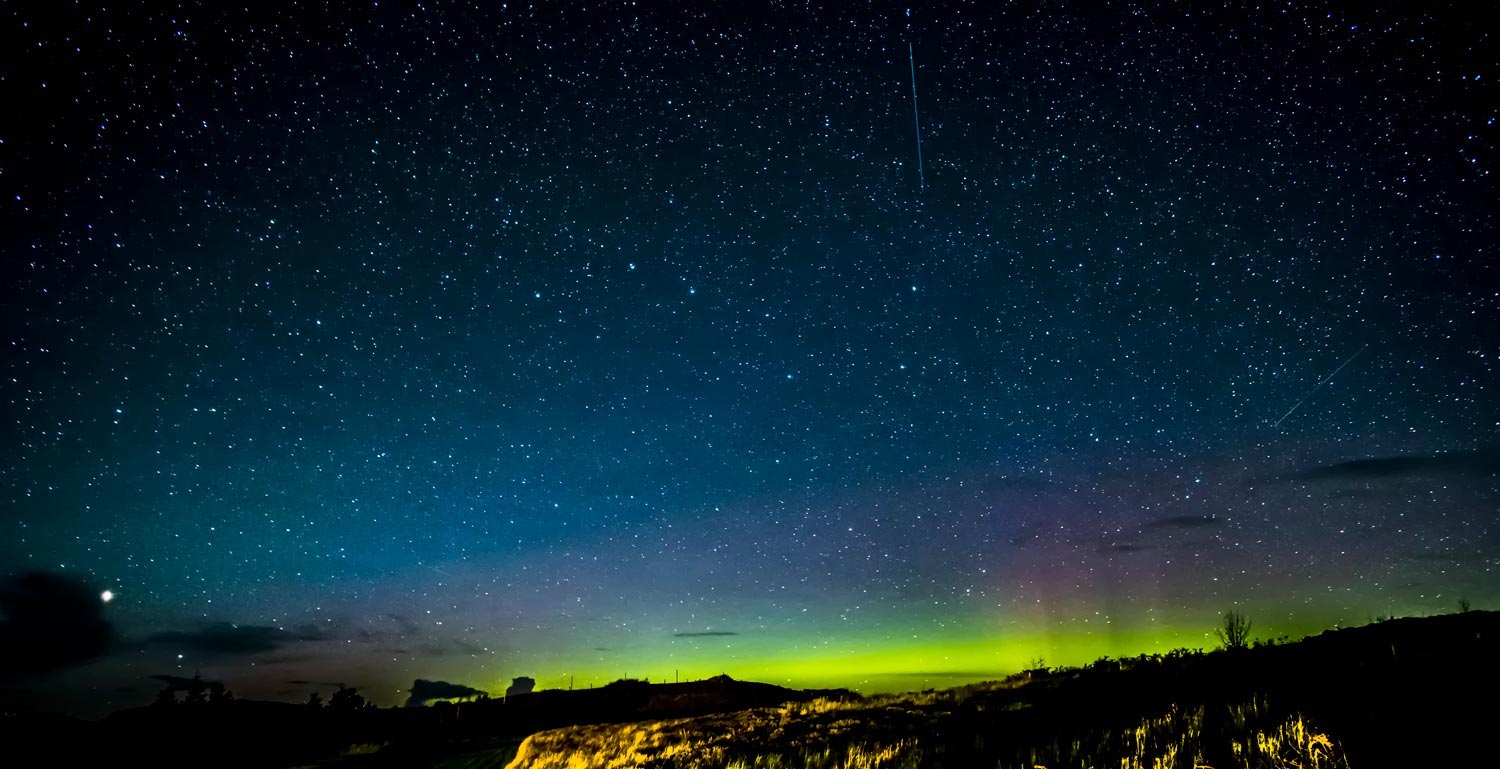
Northern lights sightings in the UK used to be a fabled, 'once in a lifetime' kinda event, observed and reserved for a tiny number of folks lucky enough to reside in a remote, light pollution-free corner in the far north of Scotland.
In 2024, however, that all changed as the aurora borealis went ballistic, lighting up skies all over the UK and a gazillion social media feeds as a result. The increase in frequency and wider geographical spread of sightings is down to increasing solar activity as the sun moves through its 11 year cycle. Winter 2024-25 marks the peak in this phase - solar maximum - so if you're into dazzling, crazy cool nocturnal displays (quite frankly, who isn't?!!), then you'll be pleased to hear that you're in for more luminescent light shows in the coming months...
As ever, the best opportunity to see these brilliant bad boys will be reserved for those based in rural locations in the north - ie Scotland, North England, North Wales and Northern Ireland. North-facing coastlines in the UK are your best bet, with the lights being most active during the Equinox and Solstice time period (March/April and September/October respectively). Looking for destination inspiration? The northern tip of the Isle of Skye in Scotland, for example, can certainly serve up the good stuff.
For more on seeing the northern lights in the UK, the Met Office website has a bunch of useful information that might help you out. Alternatively, there are several good apps for forecasting the northern lights in Europe and the UK. Here are some of the best ones:
Available for both iOS and Android, this app offers detailed information on aurora activity, including a 3-day forecast, KP index, and visual predictions. It's particularly useful for UK and European users.
This app provides alerts for aurora activity, which is particularly helpful if you're planning to watch the lights in the UK or Europe. It also offers a map, KP index, and weather forecasts to help you plan your viewing.
This app is specific to the UK and provides real-time alerts for when auroras are likely to be visible in the region. It uses data from the University of Lancaster and is ideal for UK-based aurora hunters.
This app gives detailed solar activity reports, which can help you predict aurora sightings in Europe and the UK. It covers solar flares, geomagnetic storms, and provides KP index data, helping you assess your chances of seeing the Northern Lights.
Other Northern Lights Destinations
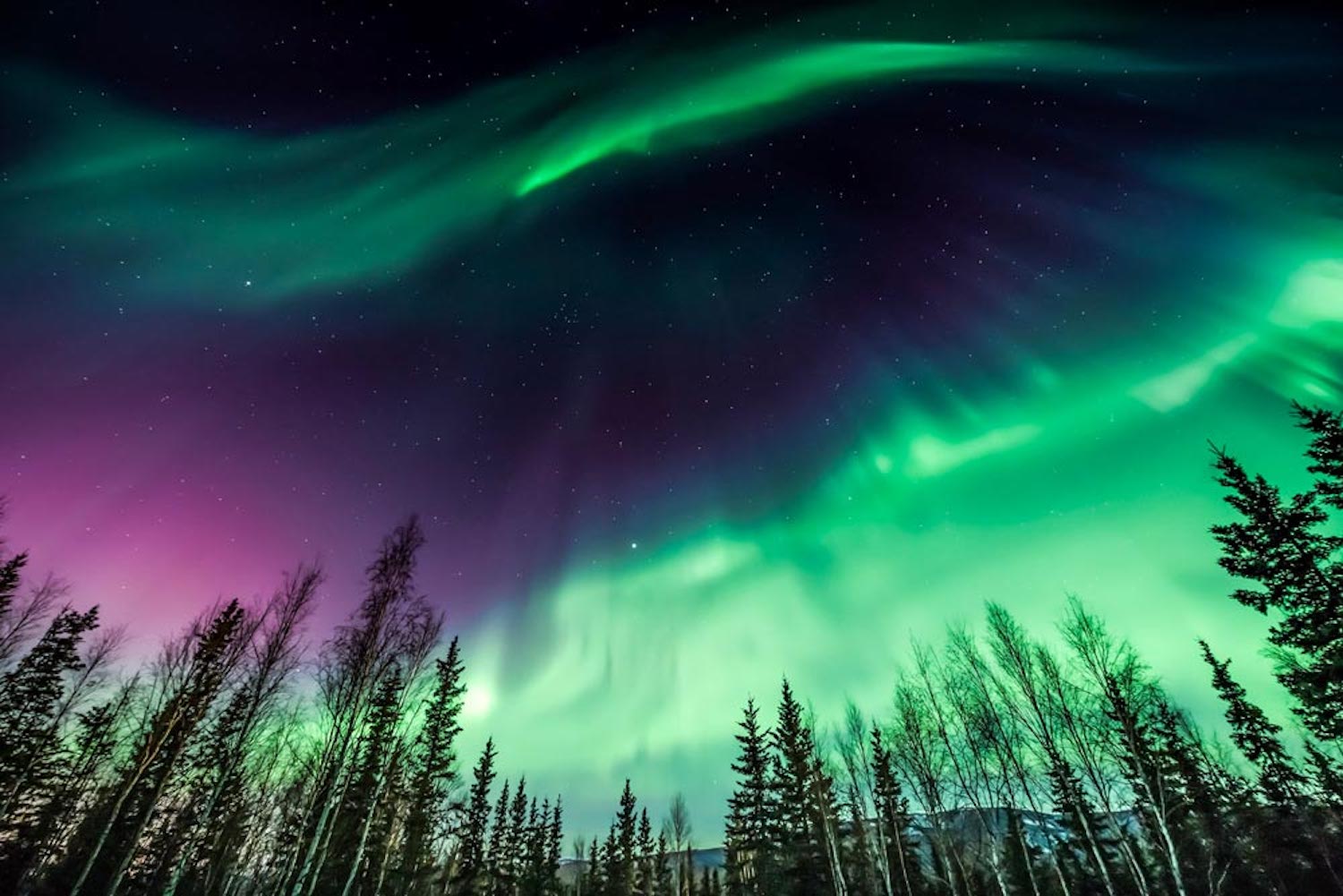
Of course, the places we’ve discussed in detail above are not the only spots on earth you can witness the northern lights. Canada, Alaska and Russia are all home to enormous (and we mean enormous) areas where it’s possible to witness the aurora borealis during winter.
The city of Fairbanks in Alaska is considered to be the ‘Golden Heart of Alaska’ and widely thought to be an amazing choice for aurora hunters. The city’s sheer amount of accommodation, dining, and infrastructure, relative to other northern lights destinations, makes it a very solid place to base yourself in the most northern American state. In Canada, meanwhile, Whitehorse and the surrounding Yukon Territory is thought of as a superb northern lights destination.
READ NEXT: Hiking the Icelandic Interior



